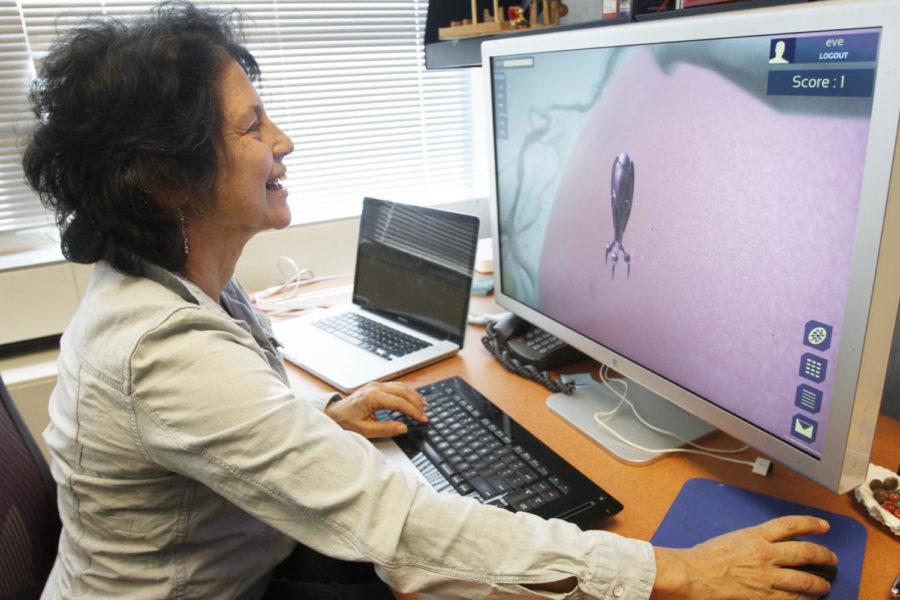‘Meta!Blast’ video game makes biology more entertaining
Photo: Kendra Plathe/Iowa State Daily
Eve Wurtele, professor of genetics, development and cell biology, works on “Meta!Blast” on Thursday, Feb. 16, in Howe Hall. “Meta!Blast” is a video game Wurtele created to help students learn cell biology.
February 18, 2012
Students now have an interactive and interesting way to learn about biology through a medium many understand — video games.
“Meta!Blast” is a video game that works to make learning biology more exciting for students.
“I decided if you can go into and explore a cell, it would be more interesting,” said Eve Syrkin Wurtele, “Meta!Blast” developer and professor of genetics, development and cell biology.
The game takes place in year 2052, during an ecological crisis. Plants are dying and the expert team of plant scientists has disappeared. The player, a novice undergraduate research student, must shrink to microscopic size, enter the plant cell to discover what is killing the plants and save the world.
“Players of the game are introduced to photosynthesis, cell respiration and the relationship between biochemical reactions and cell structures,” Wurtele said.
Throughout the game, players must solve problems and answer questions about the cell and metabolic biology.
So far, “Meta!Blast” has an incredible amount of positive feedback, Wurtele said. It won honorable mention in the 2011 International Science and Engineering Visualization Challenge sponsored by the American Association for the Advancement of Science and was featured in the Feb. 3 issue of the journal Science.
Wurtele said a video game was the best way to get the attention of the gamer generation because it takes information out of a textbook and into a more interactive form.
“Video games are very accessible to younger generations and they actually want to play them,” said Diane Bassham, co-developer and associate professor of genetics, development and cell biology. “Hopefully we can educate students with ‘Meta!Blast’ by having them do something they actually want to do.”
In addition to engaging students in a “tough to entertain” generation, teaching biological concepts is difficult for educators, Wurtele said.
“Biological processes are hard to explain in words because of the multidimensional and difficult-to-visualize concepts,” Bassham said. “The video game not only entertains, but it allows students to accurately see what is going on inside a cell.”
So far, five or six ISU professors plan to supplement entry-level biology courses with “Meta!Blast” starting next fall.
“Next year, we are hoping to have a trial run in Biol 211 and 212 classes,” Bassham said. “It will allow for introduction and assessment of the educational value of the game.”
Wurtele stressed that “Meta!Blast” is not a stand-alone teaching method.
“The goal of the game is not to replace textbook use, but to supplement textbooks and lectures,” she said.
“Meta!Blast” has recently been implemented in some Iowa and Missouri high school classrooms. It is free for academic use and is downloadable at its official website.
Wurtele and her development team plan to keep developing the game for different educational levels and with different concepts. There will be new editions released almost monthly, she said.
“We want it to be as up to date as possible,” Wurtele said. “It will be constantly changing because of new scientific information and new game engine abilities.”







